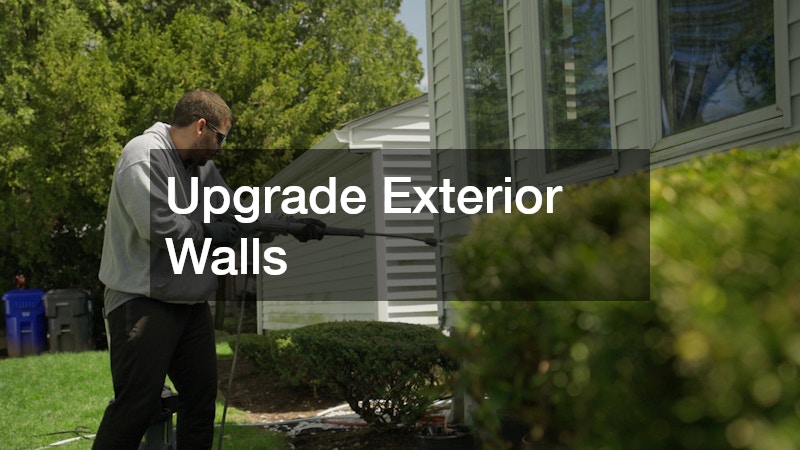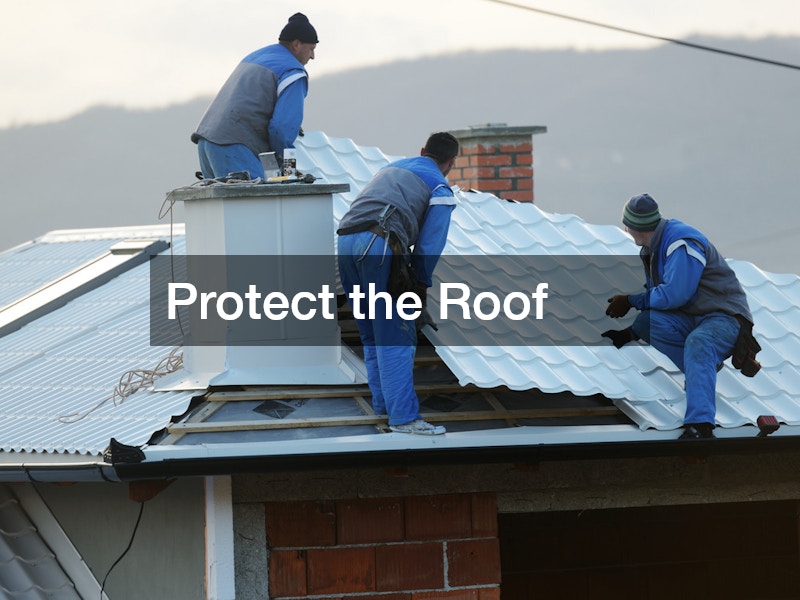

Renovating a home isn’t just about making it look better—it’s about creating a living space that is safer, more efficient, and built to last. Too often, homeowners approach upgrades with short-term goals, focusing only on aesthetics without considering how these changes affect the home’s structure, safety, or long-term value. A kitchen may shine with fresh paint and updated fixtures, but if outdated plumbing hasn’t been addressed, hidden leaks could eventually cost thousands of dollars. Likewise, a roof that hasn’t been inspected before a major storm can quickly turn into an emergency repair bill far more expensive than routine maintenance.
Smart renovations follow a different philosophy: they combine style with strategy. Instead of rushing into projects based on trends alone, thoughtful homeowners can plan carefully, focusing on improvements that reduce future repair bills, extend the life of important systems, and even lower ongoing expenses like heating and cooling costs. This requires setting priorities—knowing which projects should come first, how they connect to one another, and when it makes sense to bring in experienced professionals to ensure the work is done correctly.
Another essential factor is balancing cost with return on investment. Renovations can spiral out of control if there isn’t a plan for both immediate needs and long-term functionality. For example, replacing outdated windows may have a higher upfront cost, but the savings in energy efficiency often pay for the upgrade several times over. Similarly, adding backup power may seem unnecessary until the first outage highlights its value in protecting a family’s comfort and daily routines.
Ultimately, a well-planned renovation should make life easier, more comfortable, and less stressful—not just today, but for years into the future. In the following sections, we’ll walk through practical, actionable strategies that enhance a home’s appearance, boost efficiency, and prevent costly repair nightmares. From structural upgrades to system improvements, these steps show how thoughtful planning now can create peace of mind and long-term savings for any homeowner.

Upgrade Exterior Walls
Exterior walls are your home’s first line of defense against weather, pests, and moisture damage. When siding is neglected, cracks or gaps can allow water infiltration that leads to mold, wood rot, and costly structural repairs. Regular inspections and timely upgrades with the help of a home siding contractor are one of the smartest ways to prevent expensive surprises down the road.
A professional siding contractor does more than simply replace old panels. They evaluate the condition of your walls, check for underlying damage, and recommend materials best suited to your climate. For instance, fiber cement siding offers excellent durability in storm-prone regions, while insulated vinyl siding improves energy efficiency by reducing heat transfer.
A strategic renovation here doesn’t always mean full replacement. Sometimes, targeted repairs and sealing can extend the life of existing siding by several years. For cost-conscious homeowners, scheduling periodic power washing and repainting can also protect siding materials from premature deterioration. Regular maintenance also helps maintain curb appeal, which can significantly impact resale value. Additionally, investing in high-quality siding materials upfront may reduce the frequency of repairs and lower overall maintenance costs over time.
By treating exterior walls as a priority rather than an afterthought, homeowners not only protect their property but also create a safer, more energy-efficient environment inside the home. This proactive approach ensures that walls remain both functional and attractive for years to come.
Ensure Reliable Backup Power
Power outages are more than an inconvenience—they can be costly and even dangerous. Spoiled food, frozen pipes, or a failed HVAC system can quickly add up to hundreds or thousands in damages. Installing home generators is one of the most practical preventive renovations homeowners can make.
Standby generators automatically activate when the power goes out, keeping critical systems like refrigerators, sump pumps, and heating units running. This protection is particularly valuable in areas prone to storms or unreliable utility service. Portable generators are cheaper, but whole-house standby models offer seamless protection without the hassle of setup during an emergency.
When planning this renovation, homeowners should size their generator carefully. Instead of powering the entire home, calculate essential loads—such as heating, lighting, refrigeration, and security systems. This targeted approach reduces upfront costs while still safeguarding the most important functions. It’s also important to consider fuel sources—natural gas, propane, or diesel—based on availability in your area and the expected duration of outages.
Professional installation is highly recommended, not only for safety but also to ensure proper integration with your home’s electrical system. Many models can be paired with automatic transfer switches, which detect outages and shift the load seamlessly, eliminating the need for manual startup.
Routine upkeep is equally critical. Generators should be tested monthly, and oil levels, filters, and batteries need regular checks. Skipping maintenance could mean your system fails the moment you need it most. For long-term peace of mind, homeowners may even choose service contracts that include annual inspections and tune-ups.
By making backup power part of your renovation strategy, you protect your household from costly disruptions and ensure comfort and safety no matter what happens outside.
Maintain Entry Systems
Garage doors often don’t get the attention they deserve in renovation plans, but they play a crucial role in security, insulation, and home safety. A malfunctioning garage door not only poses a hazard but can also increase heating and cooling costs. Partnering with a local garage door contractor ensures your entry system works reliably and lasts longer.
Professionals can inspect tension springs, rollers, and openers, identifying potential issues before they become emergencies. For example, replacing worn weatherstripping is a small cost that prevents drafts and moisture intrusion. Similarly, keeping the opener’s safety sensors calibrated reduces risks for children and pets.
For long-term savings, homeowners can also consider upgrading to insulated garage doors. These models maintain indoor temperatures more effectively, which is especially beneficial for homes with attached garages.

Refresh Kitchen Surfaces
The kitchen is one of the most used—and most renovated—spaces in any home. Upgrading to custom kitchen countertops is not just a cosmetic change but a practical one that prevents costly repairs. Countertops take daily abuse from knives, heat, and spills, and poorly chosen materials often lead to cracks, stains, or water damage.
Custom options, such as quartz or granite, provide durability that pays off long-term. Quartz resists stains and scratches, while granite adds timeless style and boosts resale value. For families on a budget, laminate countertops with modern finishes offer durability at a fraction of the cost.
The key to smart countertop renovation is balancing cost with maintenance. A surface that requires constant resealing or special cleaning products can create hidden expenses. Investing in low-maintenance materials reduces both repair costs and daily upkeep.
Modernize Bathroom Spaces
Bathrooms are hotspots for hidden water damage. Poor waterproofing, outdated plumbing, or inadequate ventilation can lead to expensive mold remediation later. Working with a bathroom remodeling servicer ensures these risks are addressed during renovations.
Professionals can install modern waterproofing systems, improve ventilation fans, and replace outdated fixtures with water-efficient models. Smart upgrades here don’t just prevent repairs—they reduce monthly water bills. For instance, low-flow showerheads and dual-flush toilets save gallons of water annually, lowering utility costs.
Tile and grout are also critical considerations. Neglected grout lines are a common source of leaks. By using mold-resistant grout and applying proper sealants, homeowners extend the lifespan of bathroom surfaces dramatically.
Restore High-Traffic Flooring
Floors bear the brunt of daily wear, and high-traffic areas are especially vulnerable. Instead of costly full replacements, homeowners can extend flooring life with commercial tile restoration services.
Tile restoration involves deep cleaning, repairing cracked sections, and resealing grout to restore durability. This process is far more affordable than replacing entire floors, and it preserves the original character of your home. For homeowners with rental properties, restoration can also minimize downtime between tenants.
Another cost-saving approach is choosing commercial-grade materials in residential settings. Commercial tiles are designed for durability, meaning they last longer and require fewer repairs over time.

Protect the Roof
The roof is one of the most critical systems in a home. Even small leaks can cause widespread structural damage if not addressed promptly. That’s why partnering with the best roofing contractors is a renovation step that protects your home’s value and longevity.
A professional contractor conducts thorough inspections, looking for worn shingles, weakened flashing, or signs of moisture intrusion in the attic. Catching these early prevents expensive replacements and water damage.
When replacement is necessary, choosing the right materials makes a big difference in long-term costs. Metal roofing, for example, has a higher upfront cost but can last 40–70 years with minimal maintenance, while asphalt shingles remain a budget-friendly choice that still provides solid protection when installed correctly.
Prepare for Emergencies
Even with preventive renovations, emergencies like flooding can happen. That’s why it’s wise to understand and, if necessary, plan for access to flood restoration services. Fast response minimizes long-term damage such as mold growth, warped flooring, or compromised foundations.
However, proactive renovations can reduce the risk significantly. Installing sump pumps, French drains, and backflow prevention valves helps protect against water damage. For homes in flood-prone regions, elevating critical systems like furnaces and electrical panels can also save thousands in repair costs after an event.
Improve Window Efficiency
Windows affect both comfort and operating costs. Outdated, drafty windows can drive up heating and cooling bills, while poorly installed frames lead to moisture infiltration. Investing in vinyl frame window installations offers both immediate and long-term benefits.
Vinyl windows are durable, energy-efficient, and low-maintenance. Unlike wood, they don’t warp or rot, and unlike aluminum, they provide superior insulation. Many models also qualify for energy efficiency tax credits, further reducing costs.
The smartest strategy is to replace windows in phases, starting with the rooms most affected by drafts. This staged approach balances budget limitations while still delivering noticeable improvements in comfort and energy use.

Upgrade Water Quality
Hard water may not seem like a renovation issue, but it quietly damages appliances, clogs pipes, and reduces the efficiency of water heaters. Installing local water softener systems is a proactive step that saves money over time.
By reducing mineral buildup, water softeners extend the lifespan of dishwashers, washing machines, and plumbing. They also improve efficiency in water heaters, lowering energy bills. Additionally, softer water reduces soap usage and prevents unsightly stains on sinks and fixtures.
Choosing local water softener systems through a local provider ensures proper installation and ongoing support, which is key to long-term performance. Regular maintenance, like salt refills and filter changes, keeps the system operating at peak efficiency.
Renovating a home is an investment not just in aesthetics but in long-term durability, comfort, and savings. The smartest renovations are those that prevent costly repairs and ensure key systems function efficiently for years to come. From strengthening exterior walls with a trusted siding contractor to safeguarding your home with reliable generators, each upgrade reduces risk while adding tangible value.
The beauty of this approach is that it balances immediate enjoyment with future security. A kitchen with custom countertops not only elevates daily life but also withstands wear without costly replacements. A bathroom remodeled with proper waterproofing isn’t just stylish—it saves thousands in potential water damage. Energy-efficient windows and water softeners lower utility bills while protecting the home’s infrastructure. Even planning for emergencies, such as partnering with flood restoration experts, demonstrates foresight that pays off when unexpected events strike.
Ultimately, smart renovations require a shift in perspective. Instead of focusing solely on what looks new, homeowners must think about what protects, preserves, and sustains. By prioritizing upgrades with both functionality and longevity in mind, you transform your house into more than a place to live—it becomes a resilient, efficient, and valuable asset.
Taking the time to plan strategically, work with qualified professionals, and address key areas step by step ensures your renovation budget works as hard as you do. In the end, these decisions provide peace of mind, knowing that your home isn’t just beautiful today but safeguarded for the future.
Beyond savings, smart renovations also improve quality of life. A well-insulated home stays comfortable in every season, modernized kitchens and bathrooms make daily routines easier, and preventive systems reduce stress when unexpected challenges arise. These improvements ripple into daily living, creating a healthier, more enjoyable environment for everyone under your roof.
Most importantly, thoughtful upgrades ensure your home adapts with you over time. Whether you’re planning to stay for decades or preparing to sell, investments in durability and efficiency pay off in higher value, lower costs, and a sense of security that trends alone can’t provide. A home built with foresight isn’t just about today’s comfort—it’s a legacy of protection, stability, and lasting value.